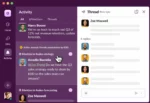In order to make Alexa more useful and engaging, Amazon introduced two new development features: a Device Address API and a new metrics dashboard.
Both the Device Address API and the new metrics dashboard allows developers to build new Alexa skills with deeper insights. As of February this year, there are 10,000 skills available on Alexa. Skills are capabilities that enable customers to interact with devices in a more “intuitive way,” according to Amazon, and they are essentially apps that users talk to instead of touch.
The new Device Address API lets developers incorporate location information into their interactions. According to Amazon Alexa evangelist Jeff Blankenburg in a blog post, this means developers “can build skills with the context to understand the customers who use the skill, then use the data to customize the voice experience.”
This skill can deliver food and groceries to a customer’s home or it could provide directions to a nearby location. Developers can also use this skill to figure out where the most active users are. Also, when a user enables the skill with the Alexa app that wants to use location data, the user will be prompted to provide consent for location data to be made available, writes Blankenburg.
Additionally, there are two levels of location data that developers can request: full address, which includes street address, city, state, zip and country; or country and postal code only.
“When a user enables a skill that wants to use this location data, the user will be prompted in the Alexa app to consent to the location data being shared with the skill,” writes Blankenburg. “It is important to note that when a user enables a skill via voice, the user will not be prompted for this information and the default choice will be ‘none.’ In this case, you can use cards to prompt the user to provide consent using the Alexa app.”

Developers also have the option to leverage a new type of card called AskForPermissionsConsent. Developers can access a user’s location, either the full address or only country and postal code, but must first get the user’s permission to do that, writes Blankenburg.
As for the new Device Address API, Blankenburg writes that three brands are already testing this out to their users: AccuWeather, Just Eat, and Real. With this new API, AccuWeather is using it to provide customers with local weather information; Just Eat is using it to understand where customers are; and Real, a chain of stores in Germany, is providing its customers with local news, hours of operation and discounts for local stores.
Developers can check out these new skills and tools by reviewing the sample code and tutorial on GitHub, which leverages the new Device Address API.






